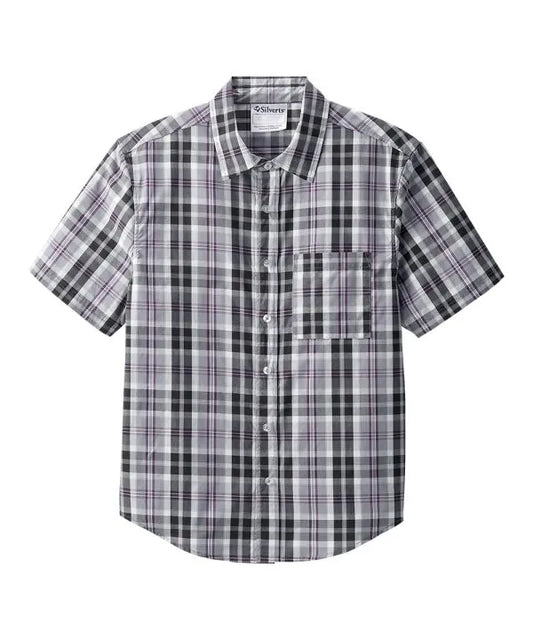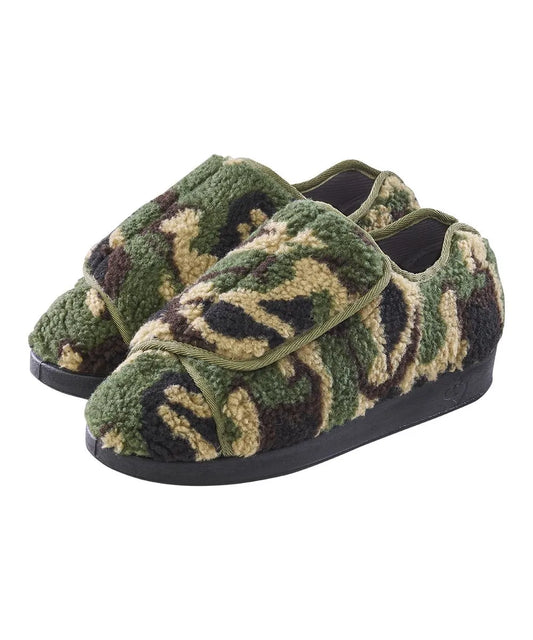Written by Tara Chen and Reviewed by Aimun Jamal
Fashion is often associated with personal expression and style. However, for individuals living with Parkinson's disease and other movement disorders, clothing can serve a more significant purpose. The challenges posed by these conditions, such as tremors, stiffness, and limited mobility, can make dressing a daily struggle.
Adaptive attire, designed to address these challenges, offers a solution that enhances comfort and empowers individuals to maintain their independence and dignity. In this blog, we will explore the world of adaptive clothing and list several different types designed to cater to the unique needs of those with Parkinson's and movement disorders.
The Impact of Parkinson’s Disease and Movement Disorders on Clothing
Parkinson's disease and movement disorders like Multiple Sclerosis, Muscular Dystrophy, and Cerebral Palsy can cause a wide range of physical symptoms that affect the ability to dress themselves comfortably and efficiently. This may include tremors - the involuntary shaking of the hands and other body parts. This makes it difficult to button shirts or fasten zippers, which require fine motor coordination.
Moreover, there is a reduced range of motion and muscle stiffness, making it hard to bend, lift arms, or put on tight-fitting garments. Balance problems can also make it challenging to put on pants, socks, or shoes without assistance. In addition, there may be difficulty in bending, squatting, or reaching, which restricts the ability to put on clothes independently. Overall, reduced fine motor skills can make it challenging to manipulate small buttons or snaps.
Types of Adaptive Attire for Parkinson’s and Movement Disorders
Adaptive clothing is specifically designed to overcome challenges and help individuals with Parkinson's and other movement disorders maintain their dignity, independence, and comfort.
1. Magnetic Closures
Magnetic closures consist of pairs of magnets strategically positioned within the fabric of a garment. One side of the closure contains a series of small, strong magnets. The opposite side features a corresponding set of magnets. When these two sides come into contact, the magnets attract and securely fasten, closing the garment. The primary advantage of magnetic closures is their ease of use. Individuals with limited dexterity or fine motor skill challenges can effortlessly close or open garments with magnetic closures, eliminating the need for fiddly buttons, snaps, or zippers. This convenience reduces frustration and preserves the wearer's independence and dignity.
Moreover, for individuals with muscle stiffness or weakness, the simple act of buttoning or zipping up clothing can be physically taxing. Magnetic closures require minimal effort, making it less physically demanding to get dressed. This is particularly valuable for those who may experience fatigue when performing everyday tasks. For example, June Adaptive offers a Men’s Long Sleeve Shirt with Magnetic Buttons.
2. Front-Closure Bras
Front-closure bras are a specialized type of adaptive clothing designed to address the unique needs of individuals with Parkinson's disease, movement disorders, or limited mobility. They are equipped with a closure system on the front of the bra, typically consisting of hooks or snaps. The wearer can easily fasten or unfasten the bra by reaching around the front, which is often more accessible and manageable than attempting to secure a traditional bra with a rear closure.
One of the primary advantages of front-closure bras is their ease of use. For individuals with reduced fine motor skills or limitations in arm mobility, fastening a traditional bra with a back closure can be a significant challenge. Front closures simplify the process, making it more manageable and reducing the time and effort required to get dressed. Moreover, traditional bras with rear closures often require reaching behind the back and twisting the arms to fasten or unfasten them. This can be physically taxing and uncomfortable, especially for those with muscle stiffness or tremors. Front-closure bras eliminate the need for such strenuous movements, reducing the risk of straining or injuring the arms and shoulders.
3. Elastic Waistbands
Elastic waistbands are characterized by their stretchable, elasticized material that encircles the waist of pants, shorts, skirts, and other lower-body garments. The elastic component allows the waistband to expand and contract, providing a comfortable and secure fit without zippers, buttons, or other conventional fastening mechanisms. Individuals with reduced dexterity, fine motor skill challenges, or limited mobility often struggle to fasten zippers or buttons. Elastic waistbands eliminate the need for these fasteners, simplifying putting on and taking off clothing. They also provide a comfortable fit that adapts to changes in body size or shape, ensuring a snug yet non-restrictive feel. This flexibility is invaluable for individuals who experience fluctuations in body size due to medical conditions or medication side effects. For instance, June Adaptive offers a pair of Women’s Soft Knit Pants with Easy Touch Closures.
4. Wider Leg Openings
Wider leg openings expand the lower part of a garment, typically around the hips, thighs, and knees. The expanded openings are designed to have more room to maneuver legs, making it simpler to put on or remove the clothing. Additionally, traditional lower-body garments may require individuals to bend, squat, or raise their legs higher, which can be challenging for those with stiffness, muscle rigidity, or balance problems. Wider leg openings minimize these demands, lowering the risk of straining or injuring the body during while dressing.
5. Anti-Slip Socks
Anti-slip socks are a specialized type of adaptive clothing designed to enhance safety and stability for individuals with Parkinson's disease, movement disorders, and those at risk of falls. These socks have gripped soles that provide additional traction and help prevent accidental slips and trips. The design is particularly effective on smooth or slippery floors, which can be hazardous for individuals with mobility or balance issues. For example, June Adaptive offers Everyday Crew Anti-Slip Socks.
The primary advantage of anti-slip socks is their ability to reduce the risk of slips, trips, and falls. For individuals with Parkinson's disease and movement disorders, maintaining balance while walking can be challenging. Anti-slip socks provide an added layer of safety, minimizing the likelihood of accidents. Additionally, anti-slip socks offer individuals greater confidence in their movements. They can walk more securely and with less fear of losing their footing. This increased sense of security contributes to a better quality of life by allowing individuals to move more freely and independently.
6. Adaptive Shoes
Adaptive shoes feature many design elements and features that differentiate them from traditional footwear. These design elements are focused on making putting on and removing shoes as easy and safe as possible. Some common features of adaptive shoes include large openings, a slip-on design, and padded collars. They empower individuals to put on and remove their footwear independently, regardless of their mobility challenges. This level of autonomy is convenient and contributes to a sense of self-reliance and dignity. They are also a crucial component of adaptive clothing, specifically designed to meet the unique needs of individuals facing mobility challenges, such as Parkinson's disease, movement disorders, arthritis, or other conditions that affect the feet and lower extremities. These shoes are thoughtfully engineered to enhance comfort, safety, and independence when it comes to footwear.
7. Adaptive Outerwear
Adaptive outerwear is a crucial category within adaptive clothing, specifically designed to address the unique needs of individuals with Parkinson's disease, movement disorders, and other mobility challenges. These garments are tailored to offer protection, warmth, and convenience. It often includes front closures with large buttons, snaps, or zippers. These are easier to manipulate for individuals with limited dexterity or fine motor skill challenges. Moreover, Velcro straps on sleeves and at the collar offer adjustable and customizable options for achieving a comfortable fit without the need for intricate fastening.
Additionally, some adaptive outerwear includes specialized zippers designed for one-handed operation, providing independence and ease of use. Some adaptive outerwear also uses magnetic closures for a secure and easy fastening option.
8. Adaptive Accessories
Adaptive accessories are components of adaptive clothing. They are designed to complement an attire while addressing specific needs related to mobility or sensory challenges. These accessories help in enhancing comfort, convenience, and style for individuals with Parkinson's disease, movement disorders, and various other mobility challenges. For example, belts can be adaptive with an easier fastening mechanism. This means the wearer does not need complex fine motor movements to fasten and unfasten their belt.
Moreover, adaptive gloves often feature cushioned palms, non-slip elements, and easy-to-use fasteners, ensuring warmth, comfort, and dexterity. They often feature adjustable straps, easy-to-use zippers, or magnetic closures for convenience and functionality.
Conclusion
In conclusion, adaptive clothing is a game-changer for individuals with Parkinson's and movement disorders. It addresses the physical challenges of dressing and supports independence, comfort, and dignity. The variety of adaptive clothing options, from magnetic closures to adaptive shoes, ensures a solution for everyone's unique needs. By raising awareness about the availability of adaptive attire and promoting its use, we can help improve the daily lives of those facing these challenges, one outfit at a time.
Find mentioned products and more at JuneAdaptive.com. Subscribe to our newsletter at the bottom of this page for more content like this.


















